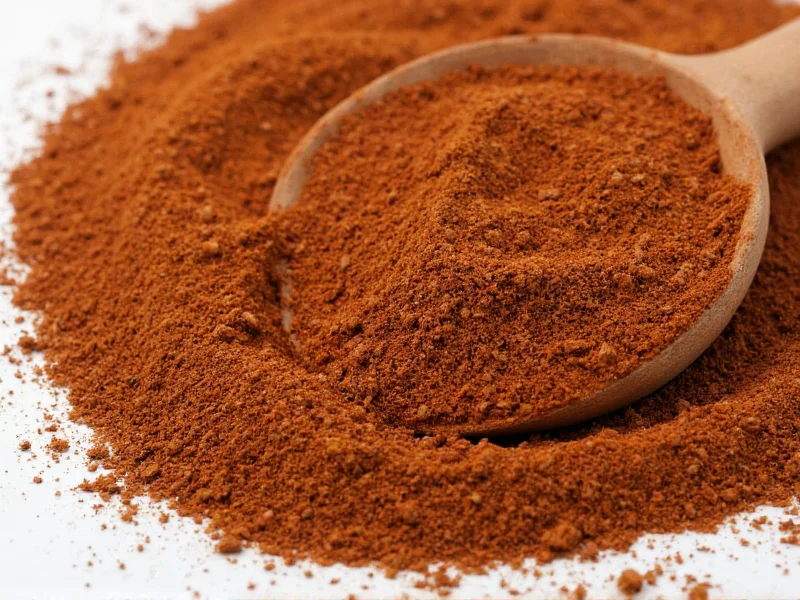When searching for \"7 spice Arabic,\" many home cooks expect a single, universally recognized blend similar to Chinese five-spice. However, Arabic cuisine features several regional spice combinations, with baharat being the closest equivalent to what's often called \"seven spice.\" This Middle Eastern spice mix varies significantly across countries and households, reflecting the diverse culinary traditions of the Arab world from Lebanon to Saudi Arabia.
Understanding Arabic Spice Blends
The misconception of a single \"7 spice Arabic\" likely stems from oversimplified recipe instructions or commercial spice blends marketed to Western consumers. Traditional Arabic cooking relies on multiple spice combinations, each with its own purpose and regional variation. These blends form the aromatic foundation of countless dishes including kibbeh, maqluba, and grilled meats.
Baharat: The Closest to \"7 Spice\"
Baharat (meaning \"spices\" in Arabic) represents the blend most commonly associated with the \"7 spice Arabic\" concept. While recipes vary, a typical Middle Eastern baharat blend contains:
| Common Baharat Spices | Flavor Profile | Traditional Uses |
|---|---|---|
| Black pepper | Sharp, pungent | Meat dishes, rice |
| Cinnamon | Sweet, warm | Rice dishes, stews |
| Cloves | Intense, sweet | Lamb dishes, soups |
| Allspice | Complex, warm | Meat fillings, marinades |
| Cardamom | Floral, citrusy | Coffee, rice, desserts |
| Cumin | Earthy, warm | Hummus, meat dishes |
| Paprika or Cayenne | Smoky or spicy | Variations by region |
Regional Variations Across the Arab World
What constitutes the perfect \"seven spice\" differs dramatically depending on location:
- Levantine countries (Lebanon, Syria, Jordan): Typically include more cinnamon and allspice with less heat
- Gulf countries (Saudi Arabia, UAE): Often feature stronger cardamom and saffron notes
- Iraqi baharat: Contains more black pepper and sometimes dried lime
- North African influence: In regions with Maghrebi influence, you might find blends approaching ras el hanout (which can contain 20+ spices)
Other Important Arabic Spice Blends
While baharat is most commonly referenced as the \"7 spice Arabic\" equivalent, several other blends play crucial roles in Middle Eastern cooking:
Za'atar
This iconic blend combines thyme, sumac, sesame seeds, and sometimes oregano or marjoram. Unlike baharat, za'atar functions as both seasoning and condiment, often mixed with olive oil for dipping bread.
Ras el Hanout
Though technically North African (Moroccan), this \"top of the shop\" blend sometimes appears in Arabic cooking contexts. It typically contains 15-30 spices, making it far more complex than the simpler baharat.
Creating Authentic Arabic Spice Blends at Home
For the most flavorful results when attempting traditional Arabic seven spice recipes, follow these professional tips:
- Use whole spices whenever possible and grind them fresh - pre-ground spices lose potency quickly
- Toast spices lightly before grinding to enhance their aromatic compounds
- Maintain proper ratios - a balanced baharat typically follows a 3:2:1 ratio of warm spices to pungent spices to heat elements
- Store in airtight containers away from light and heat to preserve freshness for up to 6 months
- Adjust to taste - authentic Arabic cooking encourages personalization based on family traditions
Traditional Uses in Arabic Cuisine
Understanding how to use these spice blends properly separates authentic Arabic cooking from imitations. The right application of what's marketed as \"7 spice Arabic\" transforms ordinary ingredients:
- Meat dishes: Rub baharat onto lamb or chicken before grilling or roasting
- Rice preparations: Add to rice water when cooking kabsa or machboos
- Soups and stews: Bloom in oil at the beginning of cooking for maqluba or fattah
- Vegetable dishes: Toss roasted vegetables with baharat and olive oil
- Marinades: Combine with yogurt, garlic, and lemon for tenderizing meats
Common Misconceptions About Arabic Seven Spice
Several myths persist about \"7 spice Arabic\" that can lead to disappointing results:
- Myth: All Arabic regions use the same seven spices
Reality: Blends vary significantly by country and even household - Myth: The blend always contains exactly seven spices
Reality: \"Seven\" is often symbolic rather than literal - Myth: Commercial \"Arabic seven spice\" is authentic
Reality: Most store-bought versions simplify traditional blends - Myth: You can substitute garam masala or Chinese five-spice
Reality: These have completely different flavor profiles
Creating Your Own Baharat Blend
For those seeking authentic Arabic seven spice recipes, here's a versatile homemade baharat blend that works across most Middle Eastern dishes:
Basic Baharat Recipe (Makes ¼ cup)
2 tablespoons black pepper
1 tablespoon ground cinnamon
1 tablespoon ground allspice
2 teaspoons ground cloves
2 teaspoons ground cardamom
1 teaspoon ground cumin
½ teaspoon cayenne pepper (optional)
Mix all ingredients thoroughly and store in an airtight container. For best results, use within 3 months. Adjust the cayenne to control heat level based on your regional preference - Gulf versions typically contain less heat than Levantine blends.
Preserving Authentic Flavor
When working with traditional Arabic spice blends, remember that freshness determines quality. The distinctive aroma of properly prepared baharat should be warm and complex without any single spice dominating. For the most authentic experience with what's commonly called \"7 spice Arabic,\" invest in quality whole spices and grind them as needed rather than relying on pre-mixed commercial versions that often contain fillers or stale ingredients.











 浙公网安备
33010002000092号
浙公网安备
33010002000092号 浙B2-20120091-4
浙B2-20120091-4